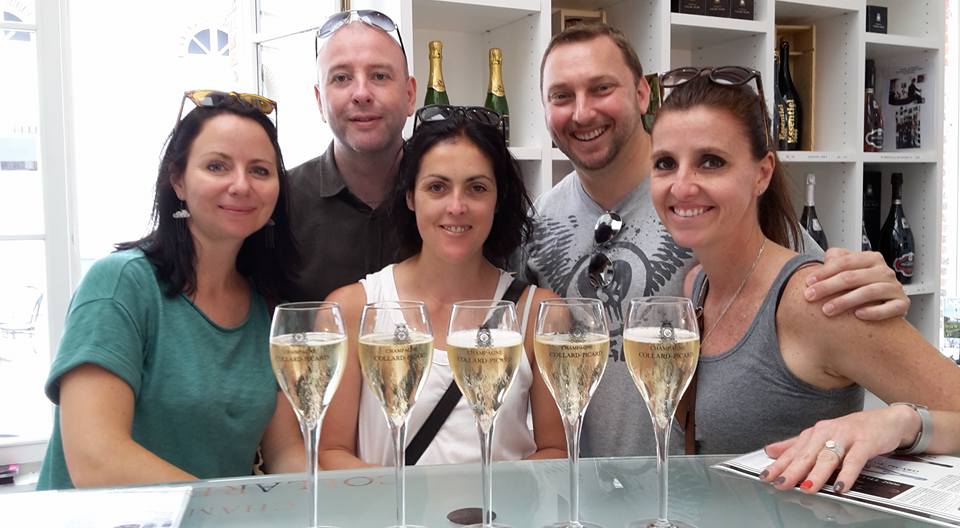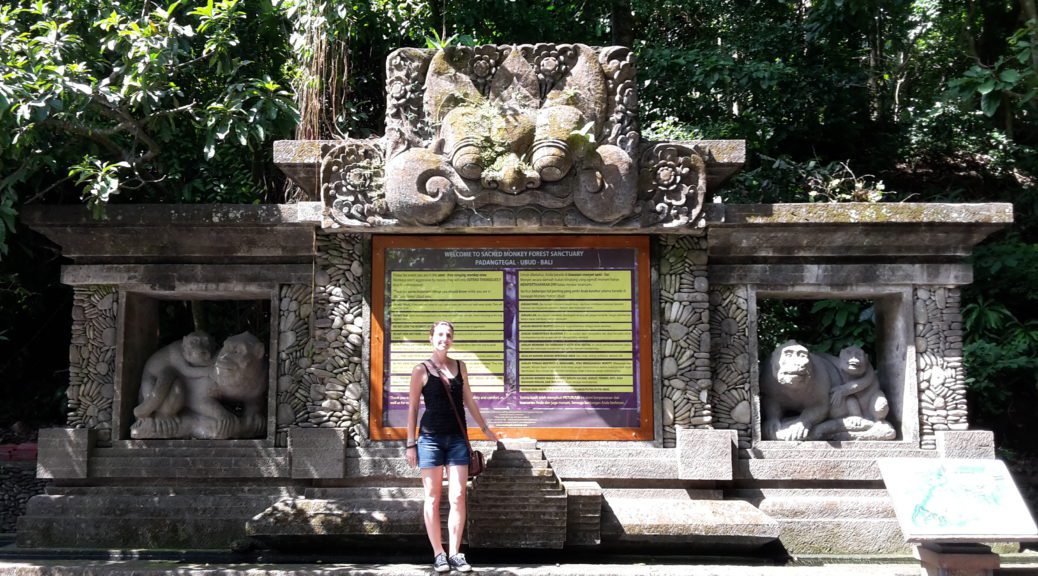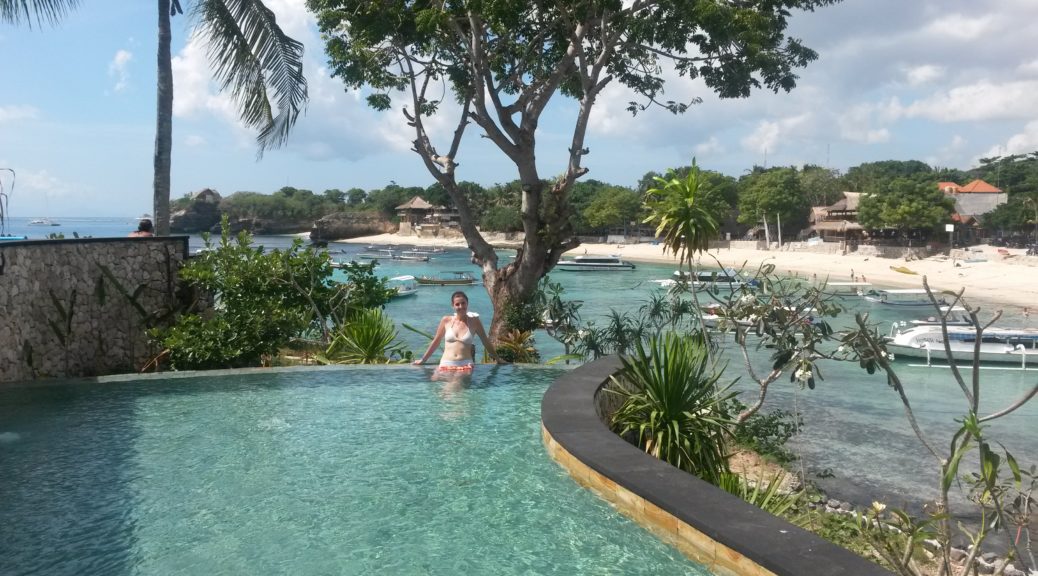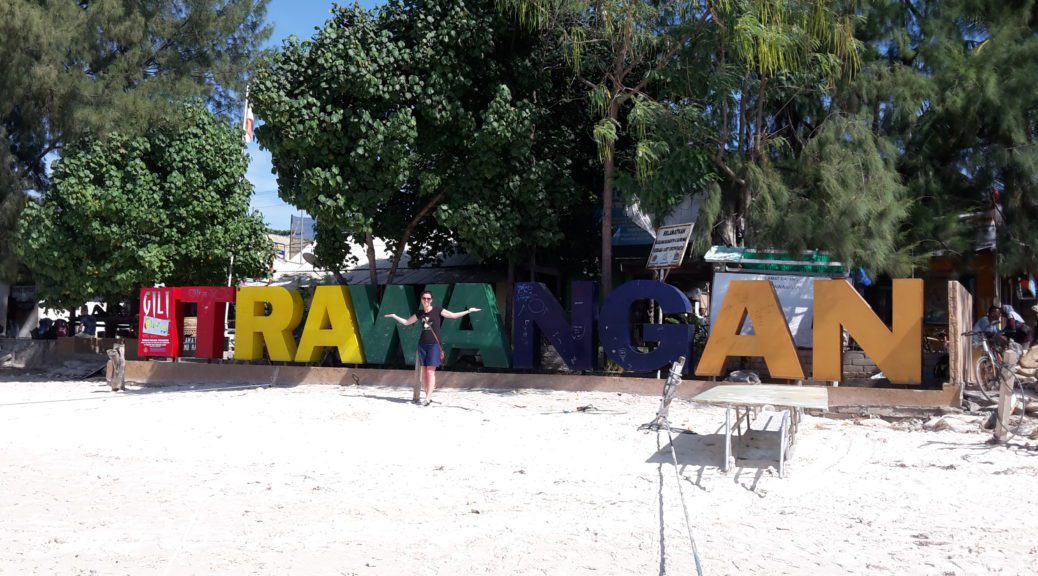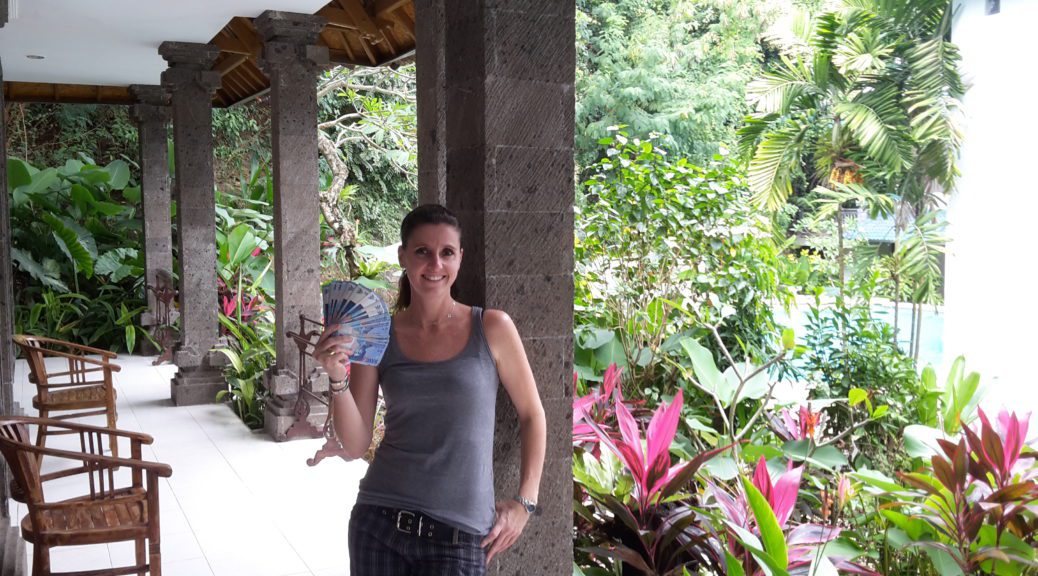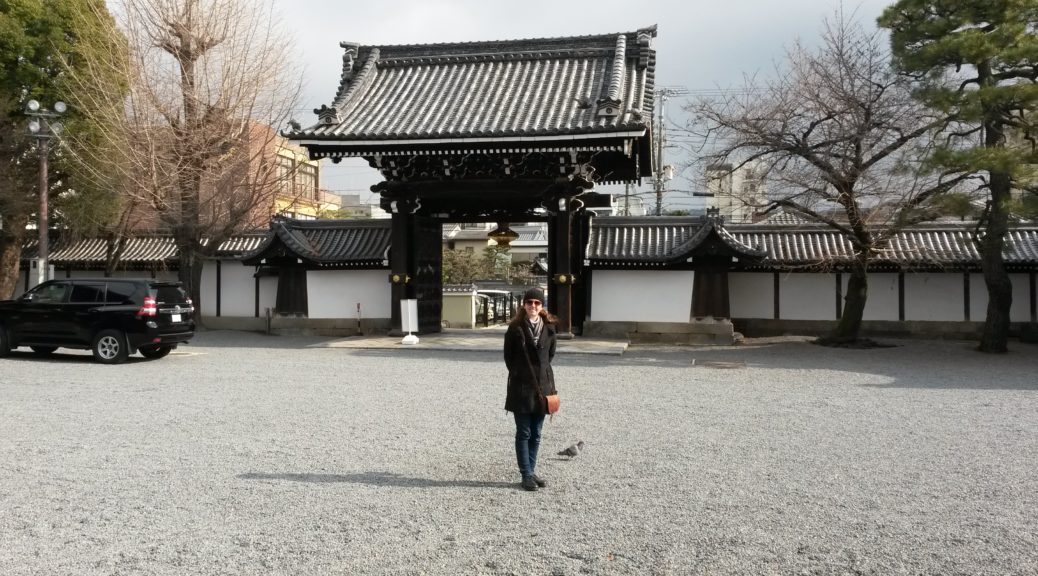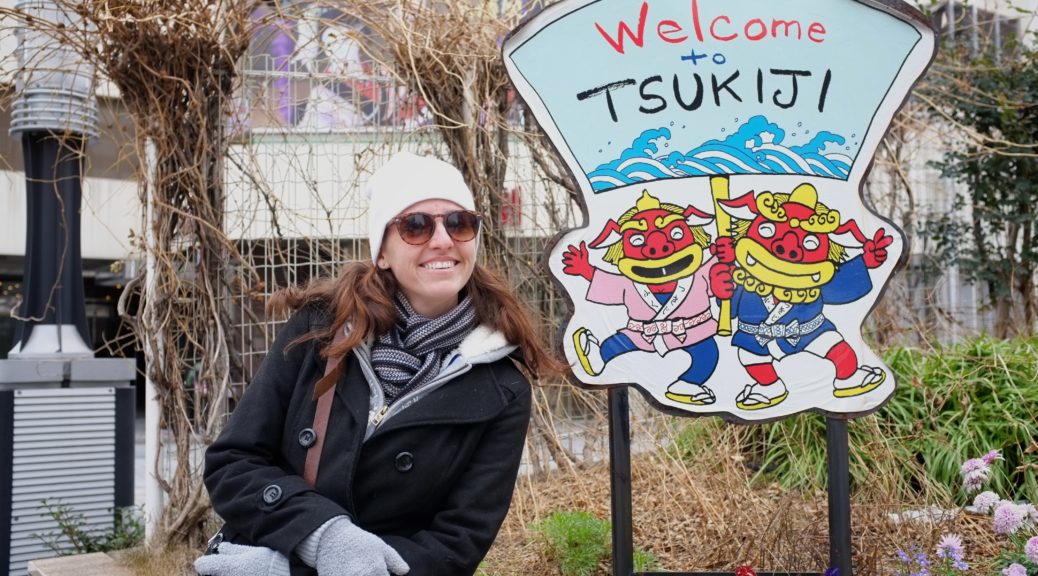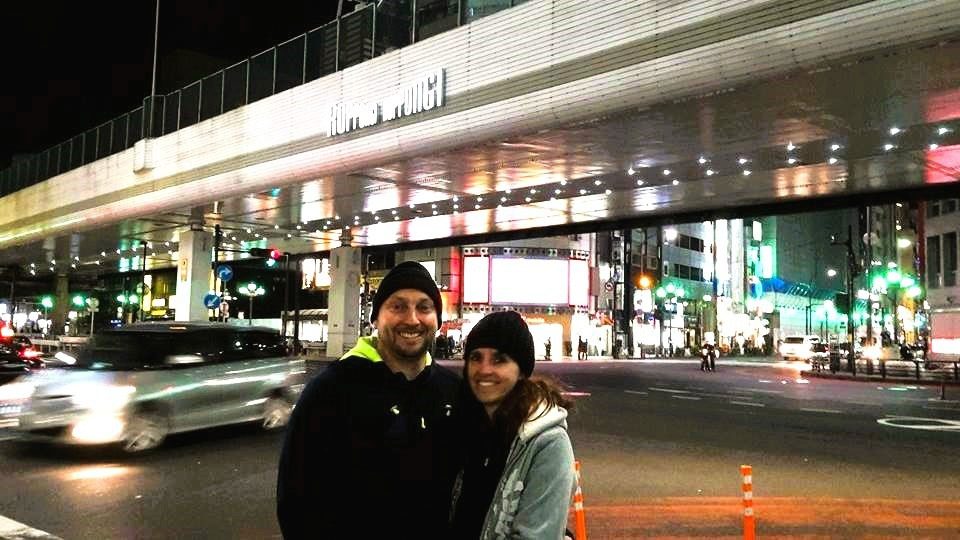CHAMPAGNE
22-25 August 2015
The plan to visit Champagne was hatched when Lixi’s milestone birthday reared its very lovely head on the horizon. It was clear that a plan needed to be made; and the plan needed to be epic. There would have to be Bubbly. LOTS of Bubbly. So what better place to celebrate than the home of Bubbly itself?
After deftly overcoming the usual obstacles (leave, flights, budgets, itinerary) in a matter of days, the plan was made and we were set for Epernay. And stoked for another visit to our beloved France!
Our first validation that our decision had been a wise one was when we were upgraded to Business Class on the Dubai – Paris second half of the outbound leg of the journey. Having both achieved Silver status on Emirates, Christian and I had taken advantage of the free Business Lounge access to pass the time between flights. It makes the world of difference to the 3 hour stop-over to have an abundance of comfortable armchairs, extensive buffet and open bar at our disposal!
The lounge also has its own boarding gate, which is where we were told by the lady checking boarding cards that we’d be travelling on a brand new A380 and she’d taken the liberty of upgrading us. What a pleasure!
It was a tough job balancing enjoying all the extras that come with the premium service and getting some shut-eye. Just a couple of glasses of Champagne (to fit the theme of the trip, of course) and a few episodes on the big-screen telly, before transforming the seat into a flat bed for a perfect sleep… until a delicious Eggs Benedict breakfast with crispy light croissant, Bucks Fizz and an assortment of other accompaniments.
Our excitement at landing at Charles de Gaulle was dampened by an hour-long wait for our luggage. Clearly the downside to travelling on such an enormous aircraft. When we finally had our bags, there were still loads of people waiting for theirs and we thought that the (real) Business Class and Emirates Skywards Gold members (who had their own carousel) couldn’t have been very impressed having paid all that tom and then having to wait around forever to get their stuff.
While our wait at the carousel didn’t feel like time best spent, we still had just enough tome to catch the RER to Gare du Nord and connect with a Metro to get to Gare L’Est in time for our midday meeting.
It was, as always, awesome to meet up with our friends and, as usual, our communal holiday began with excited chattering about the journey, news from home and impressions on what lay ahead on our shared adventure.
The others had already bought train tickets for all of us, so all that remained was to make our way to the platform for our 12h36 train to Epernay.
We’d picked a perfect day to arrive and emerged from the station into a warm and clear day in the town that was to be our home base for the next 3 nights.
First stop was to pick up our rental car. Easily done since the agent office was conveniently located behind the town’s church – a landmark impossible to miss. Soon we were in our electric blue hatchback and headed off on the wrong side of the road (well, right side for France, but wrong side for us) to try and find our house.
A few wrong turns – which we wrote off as “sightseeing” – and we found our house. It had been another Airbnb booking and proved to be a gem.
The house was triple storey, with living area (lounge, dining room, kitchen and guest loo) on the ground floor, 2 bedrooms and a bathroom on the middle level and the main loft-style en suite bedroom and a big sewing room on the top floor. The coup de gras was a lovely back garden, where we enjoyed a celebratory bottle of chilled champagne to welcome our arrival.
Our host had left the bottle for us as a gift for Lixi’s birthday, indicating that it was from her father-in-law’s vineyard and that there were more bottles from his range in the fridge, should we so wish to purchase them. We rated this Goulard Brut a 5.5, but appreciated the gesture and could envisage ourselves dipping into the stocks should the need arise.
Tastebuds piqued, it was time to do some real tasting! Epernay is famous for Avenue de Champagne, so that made a logical first port of call on our mission. We trooped down our road, past the church and into town. We did a loop through the centre, round the traffic circle and into Avenue de Champagne, facing up the street, with its wide cream pavements and grand buildings lining either side, with regal black metal palisade fencing and gold lettering spelling out names famous and aloofedly unfamiliar, but all classy and French. The first door on the left was a Tourist Office, so we stopped in and got a map and advice on Epernay and the popular Route de Champagne (in anticipation of a roadtrip).
Map in hand and plans in the making, our first tasting was at a Champagne bar called Comme, which Lix had already pencilled in our preparatory research phase. It was a good call and we bullishly started our tasting with a bottle of Pinot Meunier (6.5) and Rosé de Saigner (4), beautifully paired with a pork and mushroom ribelette, portion of ham and a cheese board, served with a basket of toast and French loaf. Obviously.
The summer sun is deceptive so even though we only left Comme in the evening, it still felt like daytime… so we stopped for sundowners en route home, where we had a very lovely time people-watching (well, mostly people’s plates-watching) and soaking in the Frenchness of it all.
Exercising our own Frenchness, dinner supplies were sourced from the Carrefour and consisted of paté, chicken, ham, cheeses, breads, chianti and 1664 (beer). It was a divine night for a walk home and a lingering evening around the diningroom table.
SUNDAY
Christian and I were in the top floor loft room, so the early sunshine through the uncovered sky lights ensured we were awake and ready to make the most of Sunday morning. Feeling ambitious, we kitted up and took a jog around the town.
This proved to be a marvellous plan because we not only got a better lay of the land (which revealed that our house was super conveniently located), but also managed to catch the town market. While this was little more than a flower stall, a green grocer stall and a lady selling rotisserie chickens and roast potatoes (that very nearly had us doing Sunday roast for breakfast!), the market did lure us to what must – without any exaggeration – be the most heavenly store in the world! A deli that had so many delicious things that there are too many to even begin describing! We exercised enormous self-control and just nabbed a couple of crêpes stuffed with cheese, ham and bechamel sauce and considered ourselves blessed to have been exposed to such a sacred place.
Returning to the nest with our spoils, we regrouped and hatched the day’s plan: Catch a train to Reims, where some of the bigger houses are open on Sundays. This would be easy enough to do as the trains between Epernay and Reims are regular and (relatively) inexpensive (assuming you’re not travelling on the Rand).
We decided on the midday train, giving us enough time to go via Avenue de Champagne for a quick sneaky tasting en route to the station. We picked Collard Picard – for no reason other than it was the first gate that was open – and sampled their Brut (6.4) in a very civilised fashion at one of the table and chair set-ups neatly arranged in their perfect white pebble garden.
A good starter to the day’s main event; we nipped down to the station and were soon on the train to Reims.
The tourist office is right outside the station, so it was a simple task to review the big map to decide where we were going and to get a take-away map to get us there.
The destination of choice was Taittenger; the route set to take us past the other big attraction in town, the Cathedral.
Sadly, the weather had taken a turn and it had started to drizzle but, fortunately, it wasn’t cold and we were on a mission, so it didn’t dampen our spirits.
Luck was on our side and we arrived, by complete serendipity with not a stitch of pre-planning, with 5 minutes to go until the next tour, which started with a video presentation on the usual history of the estate and an introduction to Champagne and its terminology, preceding a guided cellar tour and concluding with a tasting.
We were taken 12m underground, where it is a chilly 12 degrees, and shown the vaults where the 4km of chalk-walled tunnels house 2 million bottles of arguably the world’s finest Champagne. These bottles are stored for years and turned by hand (alternating a quarter revolution one way and an eighth revolution the other way bi-weekly) to ensure the perfect fermentation and meticulous sediment extraction, so that anywhere from 7 years upward, perfect Champagne can be distributed all over the world.
The tour was also interesting since the tunnels themselves are so steeped in history, having housed clergymen escaping persecution hundreds of years ago and creating an entire underground village for locals during the World Wars. The chalk walls are soft enough that many people have carved messages and drawings and it was fascinating to see how these have transcended time, while the Champagne sits waiting to be ready.
Best part of the tour though was of course the tasting… and it was well worth the wait. Our group rated the Brut a solid 8.1 and the Vintage 2008 (meaning all the grapes from that bottle were from the 2008 harvest) a respectable 6.3.
We hadn’t eaten since the morning crêpes and it was by now well into the mid-afternoon, so lunch was most certainly the next order of the day.
We easily retraced our footsteps to the main avenue that led up from the station, that was lined with cafés and restaurants.
We sat at the first that appealed… only to be told that the kitchen was closed until dinnertime. It made the next best choice somewhat easier though, since there was only one place clearly open. Fortunately, it proved itself to be both quick and amazing, which were the exact two qualities we were looking for and soon I was happily munching on a 300g “French mincemeat”, which is sort of a flat meatball or a burger without the bun, and very good crispy pomme frîtes.
The boys managed to wolf their food down so as to pop into the English pub across the Avenue – lured in equal parts by the big screen football and an enormous neon Guinness sign – to gullet a stout before we had to get back to the station.
We got back to Epernay just after 5, leaving an hour to do some more tasting. De Castellane was an obvious choice since it was near the station and had a big imposing branded tower above the building that implied it must be something special. We sampled the Grand Cru, which only earned a very average 6.3 on our (now known to be tough) scale.
Up the hill and back onto Avenue de Champagne, we chose A. Bergère because it was still busy with patrons – usually a good sign. We tasted the Brut (5.2) and the Grand Cru (6.2), while reviewing all we’d seen and done on our afternoon in Reims.
Needing a palate cleanser, we stopped off in a brasserie en route home for a pint, enjoying the evening sunshine after the damp afternoon.
Dinner was then a very French affair with baguettes and paté and cheese and chianti… and 2 bottles of our host’s Goulard Brut (which earned a much higher rating on this second time round and seemed more fairly priced – at 15 Euros a bottle – after having a better idea on the going rates).
MONDAY
Monday morning was not sunny, but much brighter than the previous, no doubt thanks to the previous day’s exuberance. The plan was to roadtrip the region and find a nice chateau for lunch.
We hit the road and headed for Verzy… only to find a ghost town. NOTHING is open on a Monday! Not even the lighthouse… so we’ll never know why in the world they even need a lighthouse!
The drive was still nice (for everyone but Lix, who was tasked with winding around the narrow streets on the wrong side of the road) and it became clear that it would have been a mean feat to taste all the Champagne houses in Champagne in a lifetime, let alone our long weekend! The one little village had its own mini tour route laid out from the town square, with 31 houses in walking distance.
Our ultimate destination was Chalons en Champagne, where we knew we were bound to find something open. And we did.
A delightful bistro that had a perfect set menu offering duck paté, bavette (steak) with shallots and frîtes and a scrumptious crème caramel to finish off.
Returning to Epernay, we went straight to drop the car off so we could resume our mission: complete Avenue de Champagne.
The plan was to walk the full length and do Mercier at the top, but when we got there and found out that we had to do a tour in order to do a tasting, we passed. We’d had the tour the day before and figured there was unlikely to have been any major breakthroughs in Champagne-making overnight, especially since the region doesn’t seem to operate at all on a Monday.
So we went to Michel Gonet instead – a beautiful old house, which has apparently previously housed the British Embassy – and did a leisurely sampling of the Blanc de Blanc (7), Vintage (6.2), Chardonnay (5.2) and Rosé (5.3).
With little time to go before the 6pm closing, the last option available to us on the Avenue was, conveniently, 2 vineyards exhibiting their wares (for free) in the Tourist Office. There we were given background and samples of the Lorint Brut and Rosé (both 5) and the Alain Mercier Chardonnay (5) and Meunier (7.5). We liked the Meunier so much that we asked to buy a bottle. No such luck, the exhibitor loudly told us that he couldn’t sell from the Tourist Office… then whispered his address and told us to meet him in 20 minutes.
Fortunately there was a brasserie next door, so we waited out the time until our “deal” with a pint. We learned a little lesson about experimentation: for me having ordered a Panache (a shandy of sorts, more unusual than unpleasant) and for Robby who had what might very well be The Worst Beer In The World.
Chalking it up to experience, we headed back up the road to meet our Mercier man. True to form, he was waiting in the parking in front of his (gorgeous) boutique hotel, with the back of his van open and ready to effect our transaction. We bought four bottles to reward his efforts.
On our way home, we stopped at L’Univers pub outside the Church and enjoyed our last evening in the company of what is clearly Epernay’s version of Gathering of the Clans. The pub cleverly has a little Tabac in the entrance – a kiosk selling basic supplies – and we marvelled at the simple genius of the one-stop shopping (and how many of our “married with children” friends would offer to pop out for bread or milk to get a quick pint in).
We had planned our supplies perfectly and made a slap-up picnic dinner with the last of the bread, paté, chicken, cheese and garnishes we had leftover from previous meals. Enjoying our last night together at our trusty diningroom table.
TUESDAY
Tuesday was the big day. The day it was all about. Lixi’s birthday. We got up, dressed and packed and made our way downstairs to do presents and have a lingering Champagne (literally) breakfast. Lixi seemed pleased with her haul: a set of engraved Champagne glasses from us and a very lush spa day from Faye. How awesome that was as old friends – as in going way back, not being old ourselves, obviously – get to spend such auspicious occasions together!
We’d opted to catch the earlier train to Paris so as to have less rush on the other side to get to the airport, so our evac from our wonderful holiday house was set for 10, to get us to the station by 10.30 and in to Paris just before 12.
We surfaced from L’Est onto the streets of Paris and made our way toward Gare du Nord, where Lix had earmarked Terminus Nord as our destination. A surreal restaurant with classic decor and antique pieces that looked like it had been frozen in time; like Hemingway or Picasso could have sat at our table in their day.
The service was exceptional and the food exquisite. Those that did, got the escargots they’d been after all holiday – served in the shell with a light parsleyed garlic butter – and we all had steaks of some persuasion for mains, with melt-in-mouth crunchy frîtes. Add a bottle of white and a bottle of red and the bill was gasp-worthy… but you only live once, right?
